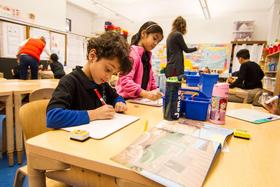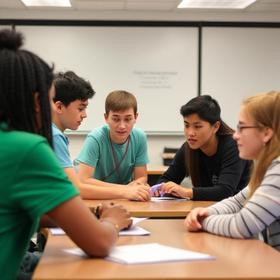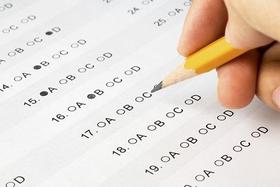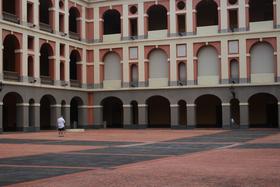Serving 229 students in grades 4-5, Bennettsville Intermediate ranks in the bottom 50% of all schools in South Carolina for overall test scores (math proficiency is bottom 50%, and reading proficiency is bottom 50%).
The percentage of students achieving proficiency in math is 17% (which is lower than the South Carolina state average of 43%). The percentage of students achieving proficiency in reading/language arts is 18% (which is lower than the South Carolina state average of 52%).
The student-teacher ratio of 13:1 is lower than the South Carolina state level of 14:1.
Minority enrollment is 86% of the student body (majority Black), which is higher than the South Carolina state average of 53% (majority Black).
Quick Facts (2025-26)
- Grades: 4-5
- Enrollment: 229 students
- Student-Teacher Ratio: 13:1
- Minority Enrollment: 86%
- Overall Testing Rank: Bottom 50% in SC
- Math Proficiency: 17% (Btm 50%)
- Reading Proficiency: 18% (Btm 50%)
- Science Proficiency: 10-14% (Btm 50%)
- Source: National Center for Education Statistics (NCES), SC Dept. of Education
Top Rankings
Bennettsville Intermediate ranks among the top 20% of public schools in South Carolina for:
Category
Attribute
Percent Eligible For Free Lunch
Community Size
School Overview
Bennettsville Intermediate's student population of 229 students has declined by 48% over five school years.
The teacher population of 18 teachers has declined by 30% over five school years.
Grades Offered
Grades 4-5
(Supplemental Virtual)
(Supplemental Virtual)
Total Students
229 students
Gender %
Total Classroom Teachers
18 teachers
School Calendar
School Rankings
Bennettsville Intermediate ranks within the bottom 50% of all 1,118 schools in South Carolina (based off of combined math and reading proficiency testing data).
The diversity score of Bennettsville Intermediate is 0.37, which is less than the diversity score at state average of 0.67. The school's diversity has stayed relatively flat over five school years.
Overall Testing Rank
#1072 out of 1118 schools
(Bottom 50%)
(Bottom 50%)
Math Test Scores (% Proficient)
17%
43%
Reading/Language Arts Test Scores (% Proficient)
18%
52%
Science Test Scores (% Proficient)
10-14%
50%
Student-Teacher Ratio
13:1
14:1
American Indian
1%
n/a
Asian
1%
2%
Hispanic
1%
14%
Black
78%
31%
White
14%
47%
Hawaiian
1%
n/a
Two or more races
4%
6%
All Ethnic Groups
Participates in the National School Lunch Program (NSLP)
Yes
Eligible for Free Lunch
100%
67%
Eligible for Reduced Lunch (13-14)
8%
6%
School Statewide Testing
School District Name
Source: National Center for Education Statistics (NCES), SC Dept. of Education
Profile last updated: 02/09/2025
Frequently Asked Questions
What is Bennettsville Intermediate's ranking?
Bennettsville Intermediate is ranked #1072 out of 1,118 schools, which ranks it among the bottom 50% of public schools in South Carolina.
What percent of students have achieved state testing proficiency in math and reading?
17% of students have achieved math proficiency (compared to the 43% SC state average), while 18% of students have achieved reading proficiency (compared to the 52% SC state average).
How many students attend Bennettsville Intermediate?
229 students attend Bennettsville Intermediate.
What is the racial composition of the student body?
78% of Bennettsville Intermediate students are Black, 14% of students are White, 4% of students are Two or more races, 1% of students are American Indian, 1% of students are Asian, 1% of students are Hispanic, and 1% of students are Hawaiian.
What is the student-teacher ratio of Bennettsville Intermediate?
Bennettsville Intermediate has a student ration of 13:1, which is lower than the South Carolina state average of 14:1.
What grades does Bennettsville Intermediate offer ?
Bennettsville Intermediate offers enrollment in grades 4-5 (Supplemental Virtual).
What school district is Bennettsville Intermediate part of?
Bennettsville Intermediate is part of Marlboro 01 School District.
School Reviews
Review Bennettsville Intermediate. Reviews should be a few sentences in length. Please include any comments on:
- Quality of academic programs, teachers, and facilities
- Availability of music, art, sports and other extracurricular activities
Recent Articles

Bullying, Name-Calling & Put-Downs: Parent Guide 2025
Practical tips for parents to address bullying, name-calling, and put-downs鈥攚ith 2025 data, policies, and expert strategies.

What Is a Magnet School? (2025 Guide)
Explore what a magnet school is, how it works, and its benefits in 2025. Clear explanation for parents, students, and educators.

Cooperative Learning in 2025: Evidence, Best Practices & Challenges
Explore cooperative learning in 2025鈥攏ew data, updated practices, expert insights for educators and families.





